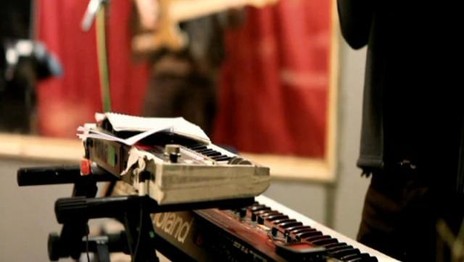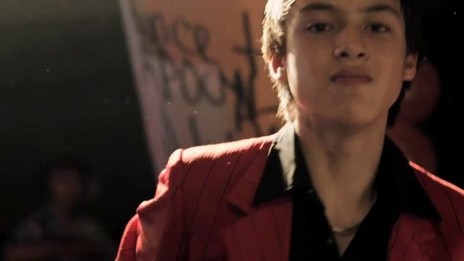AudioCulture
The noisy library of New Zealand music
Te pātaka korihi o ngā puoro o Aotearoa
So So Modern
Grayson Gilmour (vocals, guitar, synth) began his music career while still a teen living in Palmerston North. “I volunteered at The Stomach – it was a studio and an all-ages venue. I got my own set of keys so I could pop in whenever I wanted to and listen to other people record and work on their albums or practise when the studio was empty, so I spent a lot of hours there. I was a musical sponge, I was into everything. I played in a hardcore band, a metal band, an electronica act, a ska band, and I was even in a hip hop crew for a couple of gigs. At the same time, I always working on my music too. Eventually I got enough songs together to record an EP in my final year of high school, when I was 17.”
That same year, Gilmour moved to Wellington where he met his future bandmates. He was at a hardcore show, when he was impressed to meet a guy wearing a Ben Folds T-shirt: Aidan Leong (vocals, synth). He then met Dan Nagels (drums) at a party at his flat and, while working at Real Groovy, Gilmour got into a long conversation with Mark Leong (vocals, guitars, synth) about new wave, no wave, and hip hop.
Each of them had been playing music at the heavy end of the spectrum at the time: Mark Leong in the punk band Pedal Faster, Aidan Leong in metal band Heretic, and Dan Nagels in a run of Hamilton punk bands (Christ On A Couch, Thai Bathhouse, Thrifty, Blaze On, Dynamite Dixie, Stadium and Feed Dog).
The two Leongs (unrelated) and Nagels got together for a jam before asking Gilmour to join them: “I brought along this spooky old analogue synth that I’d bought off my high school teacher and was making a bunch of noise on that, as well as playing guitar and shouting. It was a really energetic and fortuitous gathering. We almost wrote our first set on the back of that first jam.”
“We wanted to instil the sense that when you come to a show, you come to participate rather than just be entertained.” – Mark Leong
From their very first show, So So Modern stood out – by bringing baked goods to share with the crowd. Mark Leong believes this idea was actually a natural flow-on from their experience in the hardcore scene. “We wanted to instil the sense that when you come to a show, you come to participate rather than just be entertained. Whether that means you eat the food off the hands of the people who are performing or if you dress in whatever style you want. Our musical upbringing in hardcore meant we were used to a scene where you’d watch the band and talk to your friends, then at the end you’d help pick up the rubbish because that was the only way that shows happened. Someone would hire a hall and everyone would pitch in so there’d be no complaints from the public afterward.”
Within a few months, So So Modern had adopted matching costumes which were designed for the band by their friend Sally Tran, as Gilmour recalls. “Sally’s white costumes were the catalyst for our dress-up antics, I think we collaborated on three or four different outfits with her, and then went on to design our own screen prints and collaborate with other designers.”
The band first gained notoriety as a party band; their music was fast-paced and they were in constant motion during their sets. At first glance, the band fit in well with the renewed interest in post-punk and new wave that had developed in the previous years. Yet they soon distinguished themselves from the pack, mixing hooky vocal melodies with sharp rhythmic changes that could turn on a dime.
Turn This Landscape Upside Down
So So Modern released their early tracks on home-burnt, two-track CDs and then sold these at shows. Wellington music promoter Ian Jorgensen (Blink) photographed the band and then later asked if they wanted to take part in one of his A Low Hum tours. Mark Leong remembers they were cautious at first but soon became firm friends:
“He came from a different scene, so we took some time to find out where he was coming from. We asked him about the sponsorship deal he had, because we were quite an independent band and money doesn’t come unconditionally when it comes to sponsorship. But the pros definitely outweighed any other negatives. We also told him it was important to us that as many of our shows as possible were all-ages. He was like, ‘yeah, I’m down with that.’ Often we ended up playing two shows in one night – an all-ages show, followed by a non-all-ages show. It made for a gruelling tour, but it established that it could be done. Some of the kids who went to those shows ended up forming their own bands and playing with us (and exceeding our success in some cases!) From then on, I think we influenced each other. Ian became quite passionate about all ages shows and we did quite a few tours with him and also played at pretty much every Camp A Low Hum, including a lot of the New Year’s things that he’s put on. We have so much fun working with him.”
By 2007, So So Modern had recorded their first official EP, Friendly Fires. They set up in the bedroom and hallway of Gilmour’s house, enlisting sound engineer James Goldsmith to assist. The EP started off withthe disco-on-acid craziness of ‘Synthgasm’, followed by the rollicky track ‘Fire Fights’ which showed their penchant for synth hooks, melodic verses and yelled choruses.
By this stage, So So Modern were at the forefront of the local indie scene and were looking overseas, booking a slot at SXSW. They initially dabbled with getting a manager to book further shows, but when this didn’t pan out they instead used contacts they’d made during local support slots to organise a tour, initially playing a mix of venues and house shows through the US midwest.
They had met Peaches while supporting CSS in New Zealand and it turned out that Peaches’ partner booked a club in Germany, so he organised a show for them (introducing them to the European club culture, where the band takes the stage at 3am!). Through the manager of another band they supported – The Plot To Blow Up The Eiffel Tour – they were able to meet Helen Barrass (Warp Records) at SXSW and she offered let the band play a house party at her flat in the UK. Mark Leong recalls it turned out to be a fortuitous event.
“Toby from Transgressive was flatting with Helen. The show was on the very last night of being in the UK. We played in the living room and there was hardly any space. Aidan was sitting with half his body out the window. Toby was there but we didn’t even talk to him properly. We left at 3am to catch our flight and got back to New Zealand to find this email saying ‘hey, you guys are great, I run this label and we want to re-release all your current material on 7" singles ... ’ ”
Gilmour points out that this wasn’t the only memorable occurrence of the evening: “Earlier that night, we turned up to play a venue in Camden and found they didn’t have any backline. We had an alternate set under our alter-ego “The Modern So and Sos” for when that happened, which involved ditching our guitars and going full DI – playing all of our synth songs with just synths and vocals. We’d jam out a song like ‘The New Internationale’ for 10 minutes. It was real fun, I really loved the flexibility of the band in that respect. Marie-Pierre from French booking agency Julie Tippex saw us play that gig and she lost her shit and wanted to book us straight away. We were like, ‘we’re leaving London tomorrow!’ But we kept in touch and she ended up booking us heaps of amazing shows and tours.”
The New Internationale
So So Modern’s schedule built to a frenzy over the period from late-2007 to early 2009, with constant tours through Europe, the UK and US. One mark of how far they’d come was that in 2006 they supported Deerhoof in New Zealand and just a year later they were playing with them at a festival in Paris alongside Dirty Projectors. Their travels took them everywhere from playing MIDI Festival in Southern France to a gig on a boat elsewhere in the country, and performing in front of thousands at Off Festival in Poland.
Transgressive promoted So So Modern in the UK with a run of 7" records and this led the Guardian to write: “They sound like Klaxons and Kraftwerk together, at once, joined at the hip, doing the Watusi at Gatecrasher. This is all probably A Good Thing. Definitely a good thing is that So So Modern, for their attention-grabbing live shows – and this is a band that likes to perform, having done 200 gigs around the world in 2007 alone [Aidan points out that it was more like 150 shows], alongside the likes of CSS and Deerhoof – wear white-hooded outfits onstage that make them look like cyber droogs or violent scientists on the hunt for body parts.”
A chance meeting with German label owner Timo Lowenstein saw them sign to his Unter Schafen Records. In between tours, they recorded two new tracks in Christchurch and released these along with four live tracks recorded in France on the EP 0004 (the fourth of their 000 numbered, self-released EPs). As well as providing distribution, Unter Schafen helped gain the band reviews in Germany and France, further spreading the word about the band.
Gilmour found organising tours at that time was far from simple. “It was still quite a technologically clumsy time. We didn’t have smartphones. We used Myspace to book shows with bands and made phone calls on landlines. We had to buy a GPS unit – we were driving all over Europe and sometimes got lost in the middle of nowhere trying to find our next show ... Our success relied on the fact we were really good friends and knew how to balance our personalities and abilities. Aidan was good with logistics and fact-checking, making sure things were going to work out. Mark was a really good communicator so he’d be on the front end of talking to people we were working with, and negotiating with them when necessary. I was really good at organising our promotional material and merch, plus emailing our labels. Dan was a really good graphic designer so could take care the visual aspect of the band. As a result of that, we were able to achieve a lot of things without ever really having a manager.”
“We had so many near-death experiences on the road.” – Mark Leong
However, Mark Leong did find there was one downside to their DIY approach to touring. “We had so many near-death experiences on the road. What we’d do is – every time we were in Europe, we’d show up a couple of days before our tour started to get over the jet lag, but also to buy a van. Usually we’d get very crappy vans, we’d think we were getting a good deal, until it broke down … One of them was an ex-special needs van, which was great because it still had all the signage on the back. And there was so much time on the road, travelling at high speeds, especially on the Autobahn. On a few occasions, the tyres were literally slipping around the road, but we couldn’t do anything, because we were travelling at 100km. You’d think – it’s just a matter of time before we’re all going to die.’ ”
Their pace of activity kept up when they were back in New Zealand, where they toured and played Camp A Low Hum. More importantly they now had an album to make.
Give Everything
So So Modern began their first full-length album by recording demos at Mark Leong’s house (with the assistance of Tim Shann). They set up at Trident Studios with Mike Gibson, who mastered some of their early releases. Mark Leong found the band was ready to take a new approach to recording:
“We didn’t want to be an electro band, which is what we were often tagged as. I used an electronic instrument more due to my exploration of Devo or Kraftwerk or bands like that. It was certainly not the kind of electro that was popular. At that time, we decided we wanted to capture a more honest sound, not over-produced ... We recorded it live, no click tracks, mostly single takes. We wanted it to sound like a live raw album. The drums are turned up loud and you can hear the air around the drums. We spent a lot of time working out what guitar tones we wanted to have and getting all that perfect. It’s an album that really tracks what the band was going through, which was a lot of turbulence.”
The resulting album, Crude Futures (2010), was an amalgam of everything that had gone into the band – running the gamut from atmospheric synthed-out sections to full-fledged post-punk yelling over thumping rhythms. It also features ‘Berlin’, which Gilmour now sees as one of the band’s most iconic tracks:
“We thought – what if we do the antithesis of that and do a track that’s slow and brooding?” – Grayson Gilmour
“We’d been playing intense fast-paced music for a long time, but it was quite consuming to play wall-to-wall high-BPM music with lots of time signature changes night after night. We thought – what if we do the antithesis of that and do a track that’s slow and brooding? Another reason it came about was because Berlin was our base while we were touring, we had free accomodation there. Peaches loaned us her practice space for a while. Berlin wasn’t as trendy as it is now, so she had a whole empty apartment where her band practised. It was a huge cavernous concrete room. We couldn't write fast-paced technical music in a room like that because it was so reflective – it would’ve just sounded like a wash of noise. Instead we had to write something slower, which builds and has a constant rhythm. The song ended up becoming the centrepiece of our set, it gave us and the audience a breather in the middle of our shows. On the nights when everything was locking in and sounded great, it was a really intense song to play.”
Photography for Crude Futures was by John Lake, who worked with the band throughout their career. He was already doing a series of photos of teens in Upper Hutt and decided the album cover should be based on images he’d taken of a local zombie roller disco (which also features in their video for ‘The Worst Is Yet To Come’). The album gained a good response overseas with the 405 giving it 8/10 and NME saying of them: “There are very few bands that can weld together successfully the disruptive qualities of post-punk with the discipline of math-rock.”
Yet Mark Leong found the band was about to hit a major hurdle, with Aidan Leong announcing he’d received a research scholarship and had to quit the band:
“We were always a collective who had an equal say in what we did, so when one quarter of the band departed, we weren’t sure what to do at first. We never thought of replacing him even though we’d written the album for a four-piece and we weren’t into backing tracks, so it was a real challenge for us. I think it affected our ability to go forward as strongly as we had been doing. But it’s just life isn’t it? If you are working with great people, it’s a really precious thing because you don’t know how long it’s going to last. The reality is that people with different circumstances will come and go. At the time, it was difficult to find the way to move forward. We did tour overseas, but that pretty much marked the end of it being a full-time, active band.”
Instead of backing tracks, the band arranged things so that Aidan’s parts could be triggered as loops (e.g. via drum pads). This was also around the time that the band put aside their costumes, as Mark Leong recalls:
“It felt like the costumes were sometimes taking away from the intimacy of the performances. The band was almost like this entity. I really liked the anonymity of the costumes at first. For a quite a few years, people didn’t even realise I was in the band and would be surprised when I’d tell them. But we eventually felt that revealing our faces would better express the sincerity of what we were doing. This is at a time when Vice magazine was first becoming popular and its writers were the kings of irony. So people also started making music out of a sense of irony and saying, ‘we kinda mean this, but we don’t mean this, but we kinda do.’ We just wanted to be more honest.”
Ultimate Reality
The band continued to play sporadic shows over the years that followed. In 2013, the band reconvened to record an EP, Transpacific Express, which saw them more fully exploring their sound as a three-piece. Mark Leong was also excited to achieve a lifelong ambition, when the band arranged a tour through Japan, Taiwan, and China.
Gilmour believes that the one-off show they did in France at the end of 2013 gives a good representation of the band’s modus operandi. “Over our career we did four shows in this city called Pau, in France. We went from playing a punk squat in the middle of an abandoned industrial zone [in 2007] to playing a gig in garage [in 2008] to finally playing a proper venue [in 2010]. Then in 2013, we were asked to play their music and art summer festival and they flew us from New Zealand to play one show. I think it says a lot about what So So Modern was about beyond music – we were always interested in building those kind of relationships and friendships when we travelled.”
The full four-piece line-up of the group did finally come together again in 2016 to celebrate 15 years of A Low Hum, which was marked by a special New Year’s Eve event at Tatum Park. Yet the chance of longer term reunion was unlikely with the band members spread across the world: Aidan lived in Europe for a while before returning Wellington; Mark Leong moved to Sydney; and Dan Nagels relocated to Shanghai (where he plays in a number of bands, most notably Mirrors).
Grayson Gilmour had continued to pursue his solo work throughout the life of So So Modern, with four albums (including three acclaimed works released through Flying Nun). He has also won both a New Zealand Film Award and an APRA Silver Scroll for his work as a film composer, but he looks back with special fondness at his time in So So Modern.
“I feel really lucky to have spent a whole stage of my life with three other people who were so totally on the same wavelength as me. We all had personalities that complemented each other well and we all wanted essentially the same thing – which was to tour, make music, and make friends. Friendship was always key to our musical exploits. There’s definitely a part of that which I miss – it was so great working with those guys in a regular fashion. Though there’s nothing to say we won’t make more music in the future, it’s just a question of what, how, when.”
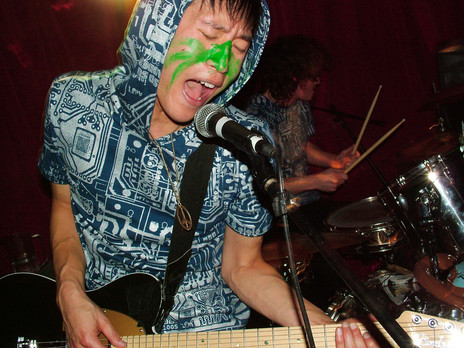
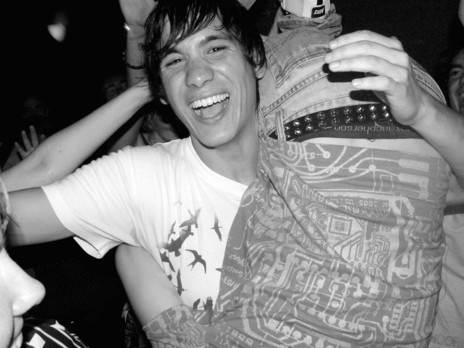
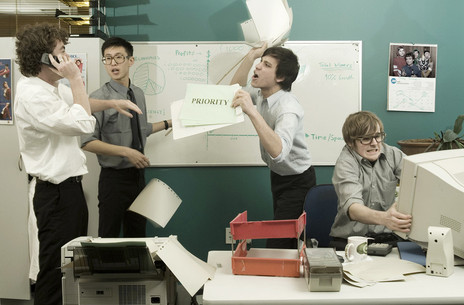
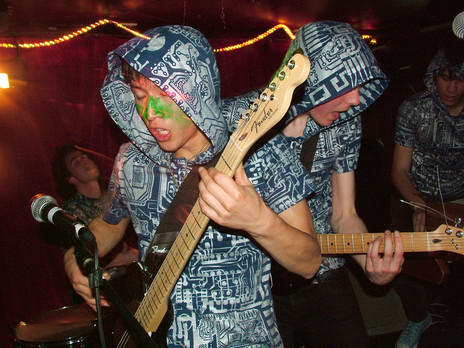
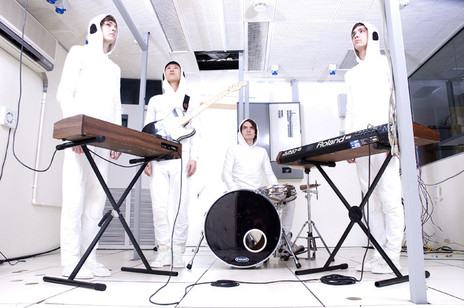
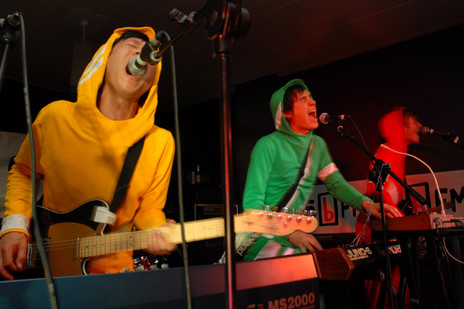
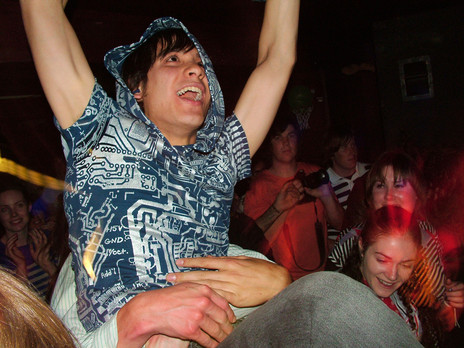
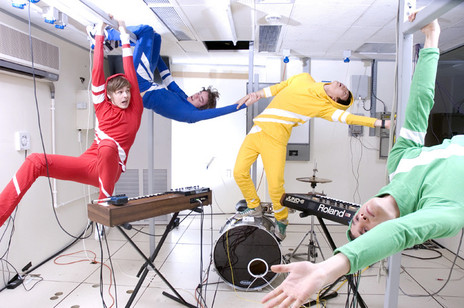
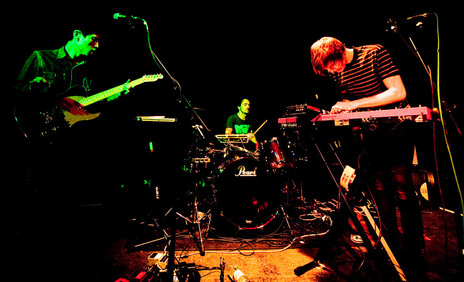
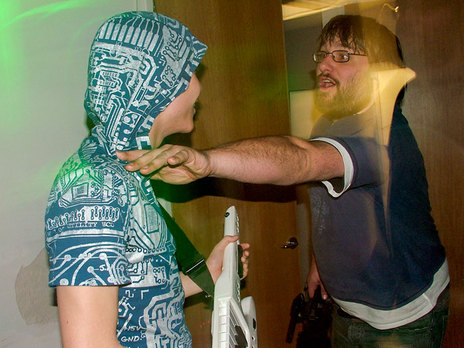
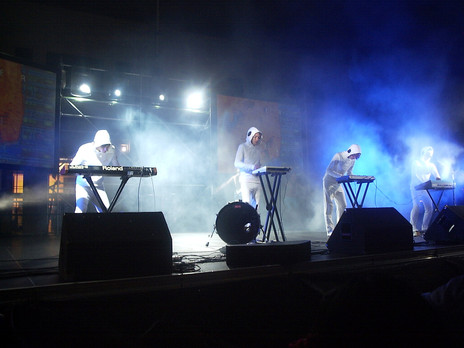
Unter Schafen
Transgressive
Mark Leong - vocals, guitar, synthesiser
Aidan Leong - vocals, synthesiser
Grayson Gilmour - vocals, guitar, synthesiser
Dan Nagels - drums
Visit our sister site
NZ On ScreenMade with funding from
NZ On Air

